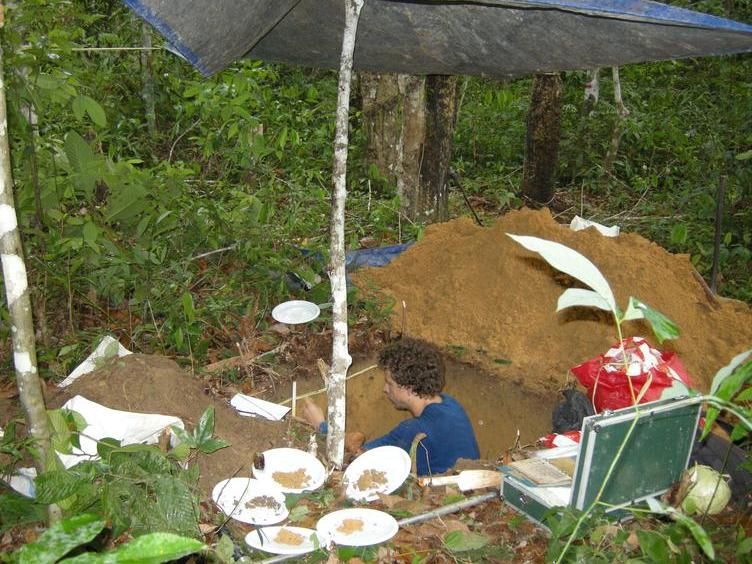Converting rainforest into palm oil plantations
Goettingen scientists analyse the effects
Advertisement
palm oil has become part of our daily lives: it is used in cosmetics, biofuels and much of the food we eat. But a recent study by the University of Göttingen serves as a reminder that although intensive farming leads to cheaper products, the environmental and social costs are high. This study by a consortium of researchers of the University of Göttingen analyzed the carbon costs and benefits of converting rainforests into oil palm plan-tations. Drawing on comprehensive data on the soil and vegetation in central Sumatra, the researchers com-pared the impact of oil palm farming with that of intensive and extensive rubber cultivation. The study is published in Nature Communications.

Dr. Thomas Guillaume taking soil samples
Dr. Thomas Guillaume
Each year, thousands of hectares of rain-forest and other forest ecosystems such as rubber plantations are converted into oil palm plantations in order to meet the growing demand for the oil worldwide. Indonesia and Malaysia account for nearly 85 % of global palm oil production and in 2012, Indonesia had the highest deforestation rate in the world. Converting rainforest land into oil palm plantations leads to the highest carbon emissions: one hectare of converted land equates to a loss of 174 tons of carbon, and most of this carbon will find its way into the air as CO2. This loss estimate is higher than the figure published by the Intergovernmental Panel on Climate Change (IPCC) to quantify the amount of greenhouse gases emitted by oil palm farming; it is also higher than the figure used by sustainable palm oil certification bodies. The study also shows that carbon loss in the soil needs to be considered.
Intensive rubber farming, on the other hand, is associated with a loss of 159 tons of carbon and extensive rubber production a loss of 116 tons. This difference between oil palms and rubber plants is largely ex-plained by the shorter plantation rotation time of oil palms. However, oil palm farming is more efficient than intensive and extensive rubber farming in terms of the number of tons of biomass produced annually versus the resulting loss of carbon.
The study offers practical advice on reducing the short-term environmental impact of both rubber and oil palm cultivation. For one, conversion of forests into oil palm plantations should be done only if the wood that is felled can then be used – such as for construction purposes – without being burned. In addition, a thicker layer of vegetation should be left on the ground as a natural fertilizer and to reduce surface run-off in converted ecosystems. Finally, the waste from palm oil mills should be returned to the plantations as addi-tional organic fertilizer.
Looking at the long-term effects, Stefan Scheu, leader of the research project and coauthor of the study, points to integrated approaches including residue management and planting other tree species with oil palms to improve sustainability. “Residues of palm oil fronds may be used as mulch and organic fertilizer to increase the nutrient availability and prevent surface run-off and erosion. Furthermore, recent results of our project indicate that planting more tree species into oil palm plantations helps to mitigate some of the nega-tive environmental impacts of oil palm monocultures without reducing the yield of oil palm and income of farmers,” says Stefan Scheu.































































